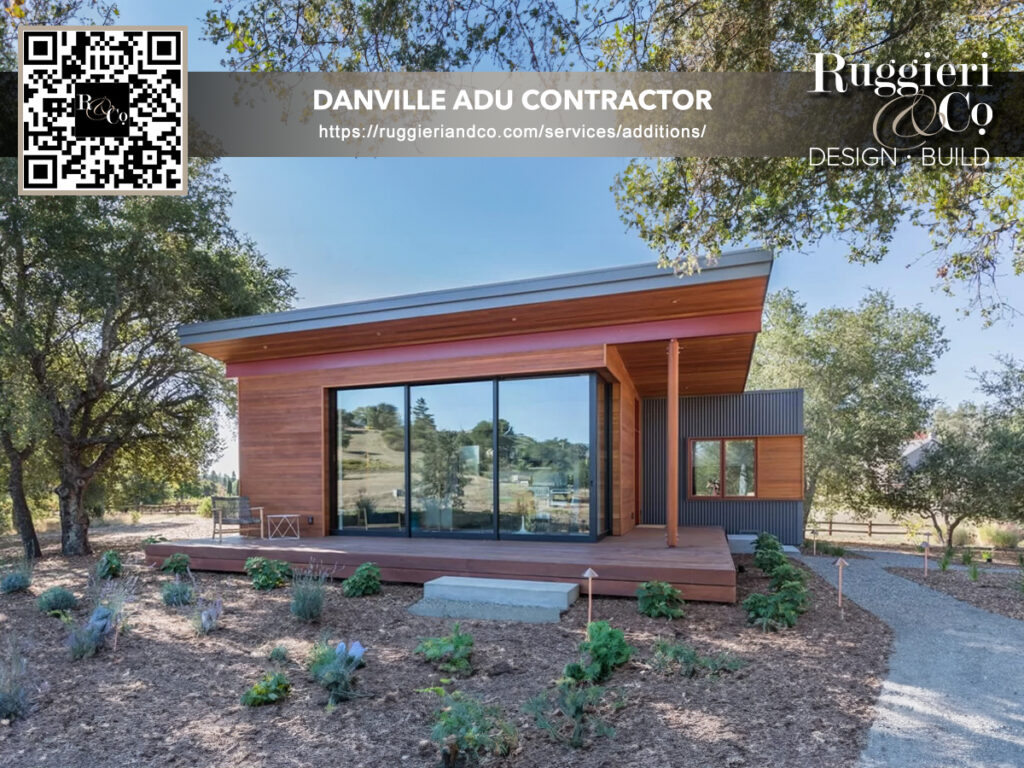Accessory Dwelling Units (ADUs) are an exciting way to help with housing problems. They are small homes next to or not far from the main house. These extra homes give a chance for more people to have a place to live. And they give homeowners a way to help others while making their own living spaces bigger.

ADUs also let homeowners make some extra money. They can rent out these extra homes. This helps make housing more affordable for people who need it. And it gives more choices for different types of places to live in.
Key Takeaways
- ADUs offer homeowners the ability to create additional living spaces while increasing the overall housing supply.
- These secondary units provide a cost-effective solution for generating rental income potential.
- ADUs contribute to affordable housing solutions by expanding housing options and promoting affordability for tenants.
- The flexibility and versatility of ADUs make them a valuable asset in addressing the housing crisis.
- Embracing ADUs can foster sustainable community development and promote inclusive neighborhoods.
Understanding the Concept of Accessory Dwelling Units
Accessory Dwelling Units (ADUs) are like secondary homes. People know them as granny flats, in-law suites, or backyard cottages too. They are complete living areas, adding living space to a property.
These living spaces can be either attached or detached. This means they are very close to the main house but have their own space. It’s a great way to have more room while living near family or rental space. It helps meet different housing needs.
What are ADUs?
ADUs are private spaces with a kitchen, bathroom, and living area. They give people their own place to live but near the main house. This makes them good for extra space or to earn rental money.
Types of ADUs and Their Advantages
There are different types of ADUs. Each type meets different needs and gives people their own space:
- Detached ADUs are apart from the main house. They offer complete privacy. They are like backyard cottages or guest houses.
- Attached ADUs are connected to the main house. They can be basement apartments or add-ons. They are more integrated with the main house.
- Interior ADUs change space inside the main house, like a garage or basement. They are usually more affordable. This is a cost-friendly way to add living space.
ADUs have many benefits. They help increase housing, offer a way to earn money, and support families living together. They also help the elderly stay in their communities.
ADUs let homeowners adapt to their changing needs. They can be extra room, a rental, or a way to care for family. This also helps the local housing supply grow.
How ADUs Are Shaping Affordable Housing Solutions?
Accessory Dwelling Units (ADUs) help a lot with affordable housing. They are great in cities and the suburbs. They make more rental places and add more homes in neighborhoods. This helps the middle folks who may not want a big house or a large building as their home.
ADUs fit right in with where people already live. This is super for families who want to live close but need their own space. It also helps people make some extra money. They can use spots in their home they don’t use much or build something small in their yard.
- ADUs are a smart and not too expensive way to add more living areas. It meets the need for different kinds of homes.
- They help make neighborhoods closer together but with more space. This cuts down on building in new places all the time.
- ADUs are just right for those in the middle housing market. They offer a good choice besides just single homes or really large buildings.
Using ADUs helps in many ways. It makes communities better for everyone. Plus, it deals with the big need for places people can afford. More people want homes, so ADUs are a good answer. They help keep up with what everyone needs and make homes more different.
Addressing the Missing Middle Housing Crisis
Accessory Dwelling Units (ADUs) are helping to solve the housing crisis. They are becoming important in many places in the U.S. These units make more homes available and make communities closer together. They are a good way to offer more affordable homes.
Increasing Housing Supply
There is not enough houses in cities and the suburbs. ADUs help by adding more homes without big projects. They fit in small spaces in existing areas. This way, new homes meet the demand and do not spread more into nature.
Promoting Density in Residential Areas
ADUs let more homes share one piece of land. This is good for smart growth, meaning communities grow well. It makes places where people can walk a lot. This means less long travels. Using what is already there, ADUs help communities grow without losing their special feel.
Also, ADUs change how homes are allowed in different areas. Places with mostly single homes start to include other types. This does not just help fill the housing gap. It makes communities more lively and interesting. Don’t pass up the chance to read this remarkable piece.
Economic Benefits of ADUs
Accessory Dwelling Units (ADUs) help with housing problems and give homeowners money. They make rental income for owners.

Owners can earn money by renting out an ADU. This money can help pay the mortgage, taxes, or other bills. It’s good for those trying to save for retirement or with high housing costs.
Mortgage Assistance
ADUs change the game for homeowners. Getting money from renting helps with paying the mortgage. This means less chance of losing the house. It makes owning a home easier and helps build wealth.
Investment Opportunities and Asset Appreciation
ADUs are also good investments. They make the home bigger and better, raising its value. This extra value can help with future investments or retirement funds.
ADUs make a home more wanted by buyers or renters. With more people looking for affordable homes, a property with an ADU is more competitive.
ADU Regulations and Zoning Laws
Understanding local zoning ordinances and land use regulations is key before you build or use an ADU. Each town has its specific rules and legal requirements for ADUs. It’s critical for owners and developers to know and meet these regulations.
Navigating Local Zoning Ordinances
ADU rules include getting ADU permits, following building codes, and meeting size and design rules. These rules help ADUs fit the area’s plan for growth and living spaces.
Streamlining the Permitting Process
Many local government initiatives are working to make building ADUs easier. Their goal is to cut red tape, lower costs, and make ADUs a good choice for adding homes.
Community engagement is vital in creating good ADU regulations. Talking with those involved helps make rules that are both affordable and right for the neighborhood. This way, every town can have rules that work for them.
Though understanding ADU rules and zoning can be tough, working together and simplifying steps can make ADUs a big help in solving housing problems. This keeps neighborhoods special too.
Case Studies and Success Stories
The impact of Accessory Dwelling Units (ADUs) on homes is big. Many ADU success stories show how they help. These stories talk about the best ways to use ADUs and the good things they bring.

In Portland, Oregon, ADUs help make living cheaper. Over 2,000 of them have been built there. This helps make more places to live and fix the shortage of homes.
Vancouver, Canada, has a cool program. Homeowners can build tiny houses in their yards. These make more homes and bring families closer together.
- In Los Angeles, California, a group helps people build ADUs. This is good for people who need a place to live. It also helps homeowners make more money.
- Austin, Texas, is also making more ADUs. They have made it easy for homeowners to build them. This makes the city a great place to live.
ADUs help in many ways. They make more homes, bring people closer, and help homeowners earn. These stories give good ideas on how to use ADUs well.
Future Outlook and Opportunities
Many people want different housing options that are affordable. ADUs are becoming key in providing affordable housing solutions. They are important in the future, needing better policies and green building methods.
Places in the U.S. see ADUs as vital for community building. They help create friendly, mixed neighborhoods. Cities are using new ways to help people build ADUs, like teaming up with private businesses or giving bonuses.
People are more interested in smaller, earth-friendly living spaces. So, ADUs are a good choice for many homeowners. Better policies and quick building rules help a lot. Green ADUs can make places where it’s nice to live and good for nature.
FAQ
What are Accessory Dwelling Units (ADUs)?
Accessory Dwelling Units (ADUs) are like granny flats, in-law suites, or backyard cottages. They are living spaces apart from the main home. ADUs have their own kitchen, bathroom, and living area.
This setup offers independent space near the main house.
What are the different types of ADUs?
There are many kinds of ADUs. These include detached structures in the backyard or added onto the house. Some are even made from converting garages or basements.
How are ADUs addressing the missing middle housing crisis?
ADUs are helping by providing more housing options. They offer mid-size living between single homes and big apartments. This meets a need for more diverse housing in existing areas.
In the process, it makes neighborhoods more compact and encourages walking. This is good for communities and the environment.
What are the economic benefits of ADUs for homeowners?
Homeowners can earn money by renting out ADUs. This rental income can help pay off the house or cover bills. It can also be a smart investment to grow your wealth over time.
What should homeowners consider regarding ADU regulations and zoning laws?
It’s important to follow the rules about building ADUs. Each area has its own laws. Homeowners may need permits and must meet certain design rules.
Many places are making it easier to add an ADU. They are simplifying the process and rules.
Can you provide examples of ADU success stories?
There are many stories of how ADUs have helped. They show how these units can make housing more affordable and better for the community.
People have found creative ways to use ADUs. Their stories tell of the benefits for homeowners, towns, and cities.
What is the future outlook and opportunities for ADUs?
The outlook for ADUs is bright. They offer a way to create more varied and affordable housing. As more people look for different housing, ADUs will become more popular.
But making the best of ADUs will need new policies and financial support. It also calls for building in a sustainable way.
Ruggieri & Co Home Remodeling Danville is the premier home remodeling contractor in Danville, CA, and the surrounding areas. Our team designs dream homes that exceed the highest standards and feature a unique, personal touch. With over two decades of experience, superior craftsmanship and attention to detail are guaranteed. We offer free quotes for our services and strive to provide the best value for our customers. From interior and exterior renovations to custom work, we are your go-to source for all home remodeling needs. If you want to make your dream home a reality, visit us today at 290 Rose St # A, Danville, CA 94526, and let us help you.








